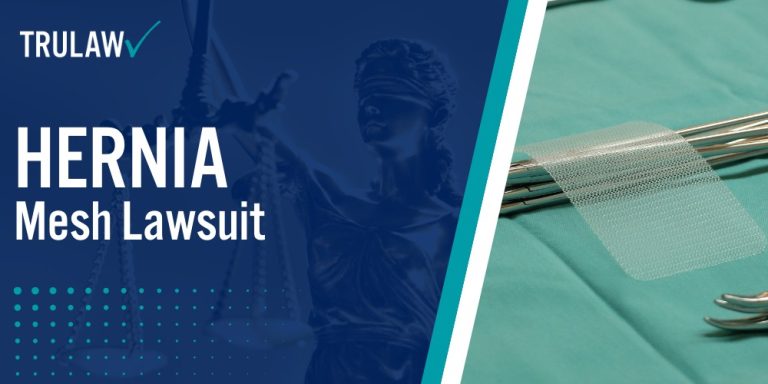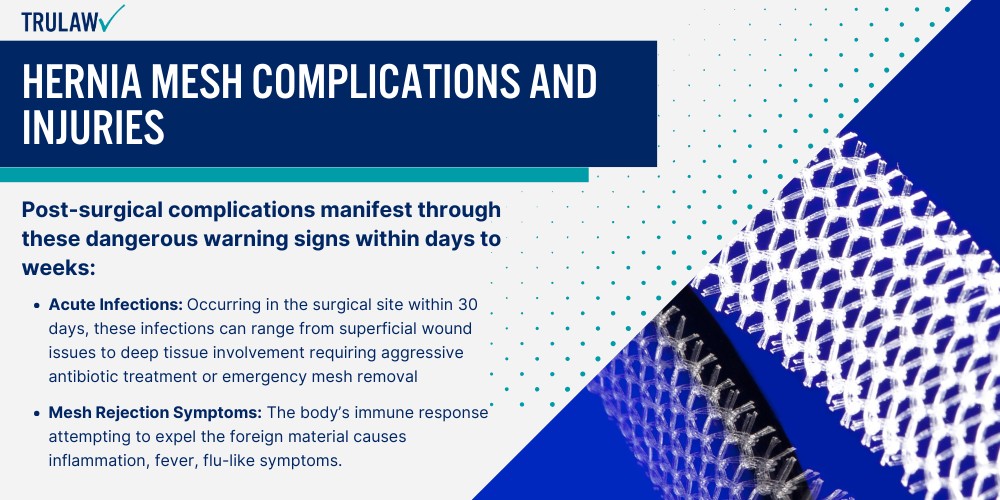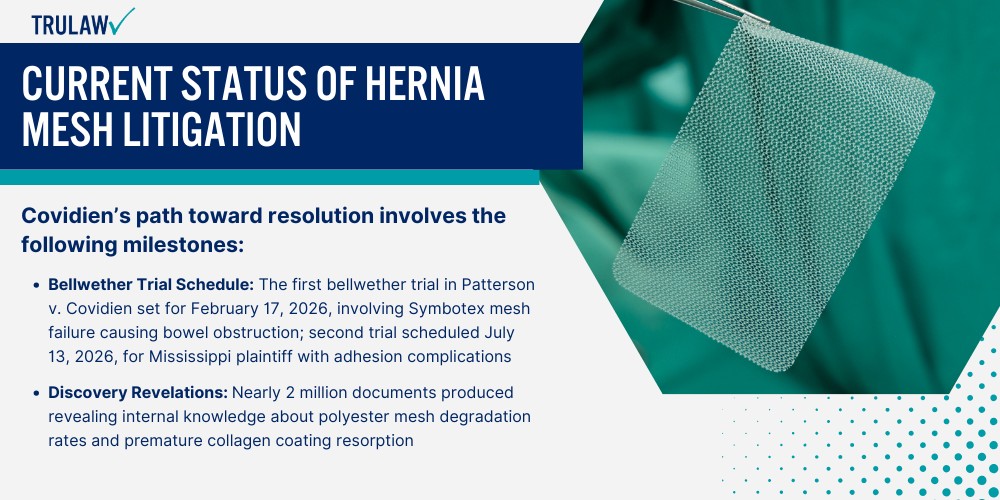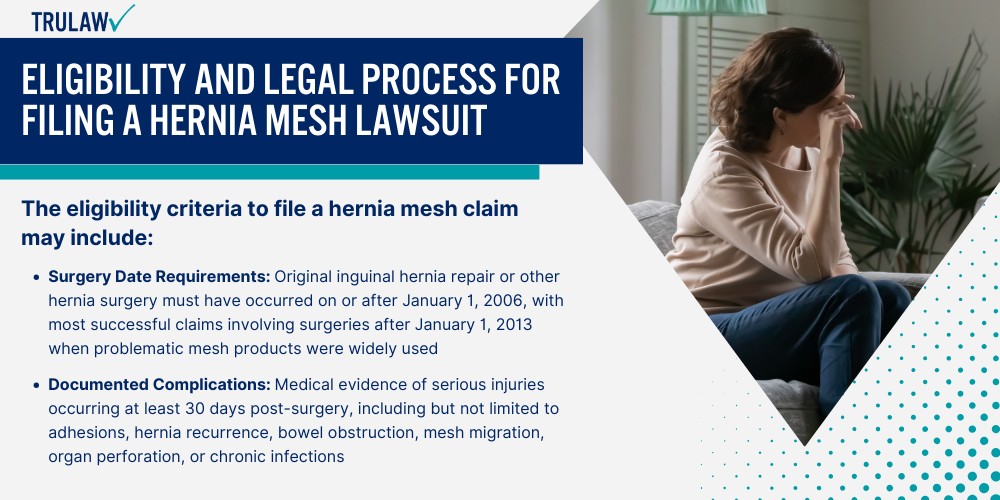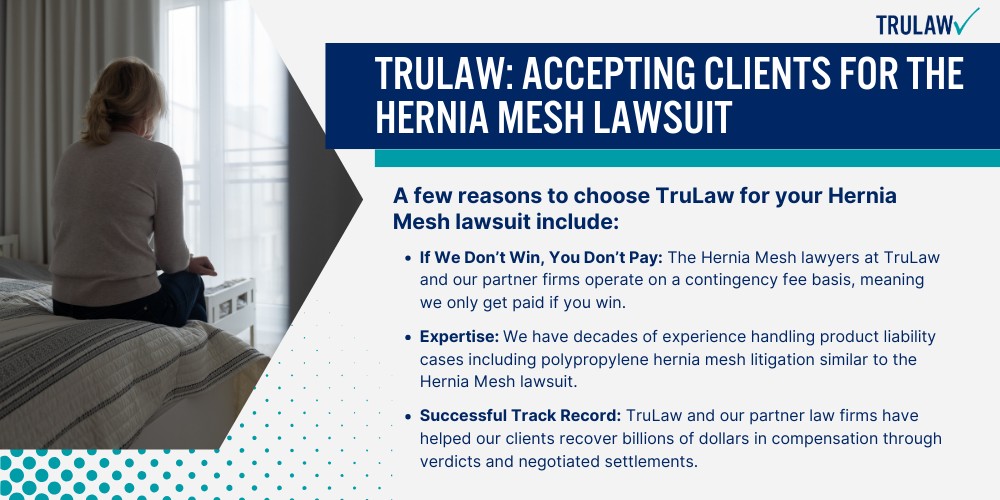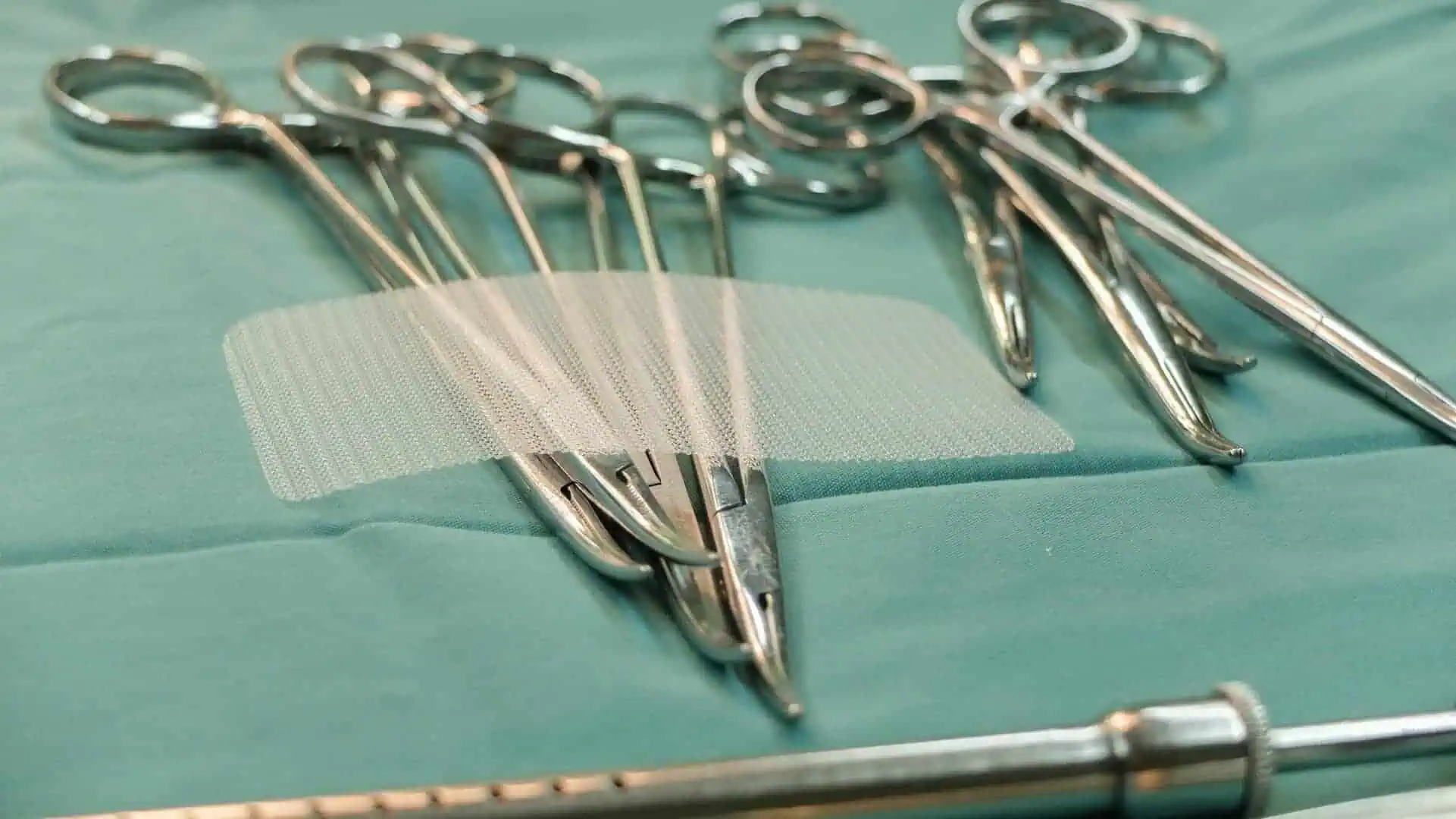The FDA’s controversial 510(k) clearance process has allowed many hernia mesh devices to enter the market without rigorous testing, requiring only that manufacturers demonstrate their device is substantially equivalent to an existing product.
This expedited approval pathway has permitted potentially dangerous mesh designs to reach patients without clinical trials proving safety and effectiveness.
According to research, two-thirds of recalled mesh implants were approved through this abbreviated 510(k) process rather than the more stringent premarket approval requiring clinical evidence.

Product liability theories establish three fundamental paths for holding manufacturers accountable:
- Defective Design Claims: When the fundamental blueprint of a hernia mesh product contains inherent flaws that make it unreasonably dangerous, regardless of manufacturing quality or warnings provided
- Manufacturing Defects: Errors during the production process that cause the mesh to deviate from its intended design specifications, such as contamination, improper sterilization, or material degradation
- Failure to Warn: Manufacturers’ obligation to inform healthcare providers and patients about known or reasonably foreseeable risks associated with their products
Manufacturers had a legal duty to ensure their mesh products were reasonably safe for their intended use and to provide adequate warnings about potential complications.
When companies knew or should have known about mesh defects through adverse event reports, internal testing, or scientific literature but continued marketing these products without proper disclosure, they breached their duty of care to patients.
These breaches form the legal foundation for compensation claims, as manufacturers can be held liable for prioritizing profits over patient safety.
Common Defendants and Their Mesh Products
Several high-profile market withdrawals and recalls have strengthened plaintiffs’ cases by providing evidence of product defects.
Ethicon’s 2016 withdrawal of Physiomesh after just six years on the market followed reports of recurrence rates nearly double those of other mesh products.
These four medical device giants dominate the hernia mesh litigation landscape:
- C.R. Bard/Becton Dickinson: Currently defending against 24,099 Bard hernia mesh cases (MDL-2846) for complications caused by Bard’s polypropylene hernia mesh products (specifically Ventralex, PerFix Plug, 3DMax, and Ventralight). In October 2024, a hernia mesh lawsuit settlement agreement was reached by Bard, covering approximately 38,000 cases – this includes cases in the federal MDL and roughly 15,000 cases being litigated in Rhode Island state court.
- Covidien (Medtronic subsidiary): Facing 1,625 cases in the Covidien hernia mesh MDL (MDL-3029) – their Parietex, Symbotex, and ProGrip polyester-based mesh products have been associated with higher infection rates and mesh degradation.
- Atrium Medical Corporation: Their C-QUR mesh products with omega-3 fatty acid coating resulted in FDA enforcement action and facility shutdown due to coating separation causing severe allergic reactions.
- Ethicon (Johnson & Johnson): Voluntarily withdrew Physiomesh Flexible Composite Mesh from the market in 2016 after European registries reported unusually high failure rates.
The FDA continuously monitors the safety of hernia surgical mesh products and took enforcement action against Atrium Medical in 2015, obtaining a court injunction that halted C-QUR manufacturing until the company addressed contamination issues including human hair found in the mesh coating.
If you or a loved one experienced severe complications after hernia mesh surgery, you may be eligible to seek compensation.
Contact TruLaw using the chat on this page to receive an instant case evaluation and determine whether you qualify to join others in filing a hernia mesh lawsuit today.
These manufacturers collectively represent billions in annual medical device revenue, yet internal documents revealed through the Bard hernia mesh litigation suggest many were aware of elevated complication rates years before taking corrective action.
The consolidation of cases into multidistrict litigation has streamlined the legal process, allowing coordinated discovery that has uncovered evidence of corporate knowledge about mesh dangers that companies failed to disclose to the medical community.
